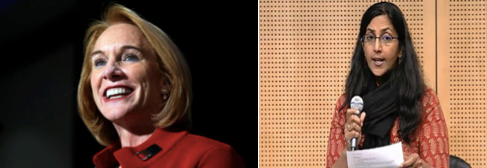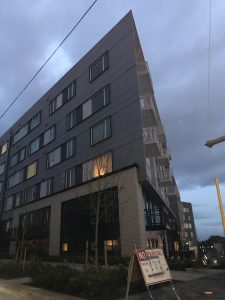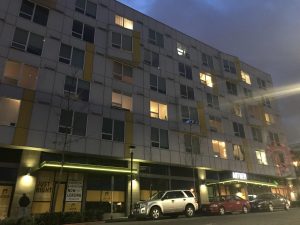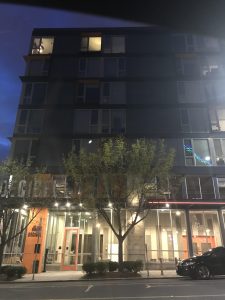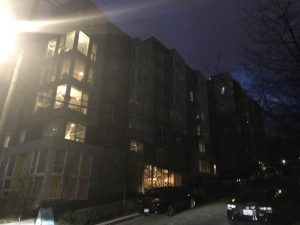Durkan-Sawant Jobs Tax: What Does 750 Units of Housing Look Like?
The City’s version of Mandatory Inclusionary Zoning (MIZ) called Mandatory Housing Affordability (MHA) gives small increases in square footage for new development in exchange for very large fees, more risk, and extra construction costs. In many if not almost all cases there is no value exchange with the City’s program; the fees and risk will either make projects infeasible or be absorbed in the form of higher prices. The money? It gets funneled to non-profits that are spending more and more for less and less housing, like at 12th Avenue Arts which produced 88 units for $47 million or about $500,000 a unit, enough to buy each of those people their own house. Now comes the proposed $150 million tax on jobs supported by socialist Councilmember Kshama Sawant and that will inevitably supported by Mayor Durkan. Both ideas are inflationary, and grossly overestimate what can be produced with the money. The new tax claims it will produce 750 units a year for the $150 million. Let’s see what that looks like.
So the other night I decided to grab a Reach car and see if I could find 750 units that are in process or newly opened. There’s nothing special about where I went, I just sort of randomly drove around and followed what I know about areas that are getting built out. Here’s what I found.
Batik: Yesler Terrace
Developer: Vulcan
Units: 195
Start: 2016
Finish: Summer 2018
Anthem:103 12th Avenue
Developer: Spectrum
Units: 120 units
Start: 2014
Finish: 2018
Decibel: 301 12th Avenue
Developer: Spectrum
Units: 75
Start: 2014
Finish: 2018
Reverb: 1023 E Alder Street
Developer: Spectrum
Units: 84 units
Start: 2014
Finish: 2018
East Union: 2220 E Union Street
Developer: Lake Union Partners
Units: 144
Start: 2014
Finish: 2018 (Under construction)
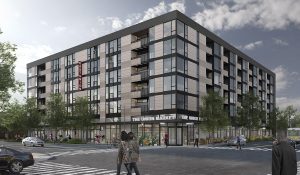
Liberty Bank:2320 E Union Street
Developer: Capitol Hill Housing
Units: 115
Start: 2015
Finish: 2018 (Under construction)
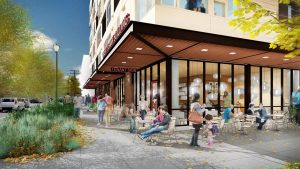
So let’s look at these based on what is easy to know. There are 6 projects for a total of 733 units or about 122 units in each building. The shortest production time is Batik which will likely make a 24 month turn around and the longest is probably East Union, although it is always hard to know when “start” really happens. Land may be tied up for awhile before permitting goes forward. I must say that for all the hassles associated with these projects, including some rezones and design review, the average time of about 3 and a half years.
Yes, there is a lot of production going on. From 2005 to 2015 the city saw about 5000 units permitted per year. Actual finished production, that is a building ready to occupy, is a different measure. Getting permits doesn’t mean built, it could mean another 2 years or longer depending on the site and other factors. I don’t know enough about the Liberty Bank building’s financing other than it got $1,000,000 from the Housing Trust Fund (HTF), the City’s housing levy, and some tax credits. The timeline is surprisingly fast and at a price tag of $30,299,658 or about $260,000 per unit also surprisingly cheap compared to 12th Avenue Arts. One wonders why the board of Capitol Hill Housing couldn’t just cite these numbers rather than threatening me with “next steps.” Weird.
Costs aside, my point here is that even an optimistic timeline of more than 3 years, it would take until sometime in 2021 to see the first units from the Durkan-Sawant jobs tax to open their doors. This would mean that 6 or 7 non-profits would have to wade into the land market, find land, assemble capital, get through permitting, and design review. This of course would be on top of all other production. And each of these projects would be exposed to the growing regime of regulatory overreach coming from the City’s permitting departments. And even if the ribbons were being cut sometime in 2021, it would only offer relief to 733 of the City’s estimated 26,250 cost burdened residents. It hardly puts a dent in the problem they’ve defined.
Building housing is an achingly slow process and is very risky. And it is very expensive. I doubt that the City will collect and distribute money very efficiently, and I doubt that non-profits will be able to find land and other funds to build 733 units per year. As I pointed out in yesterday’s post, real people are having real problems today. Three years is too long to wait. I think taxing jobs is a horrible idea. But if the the Mayor and Council are determined to make that mistake, then why spend so much time and money building units that won’t solve the problem for many households; why not just help people with rent?
